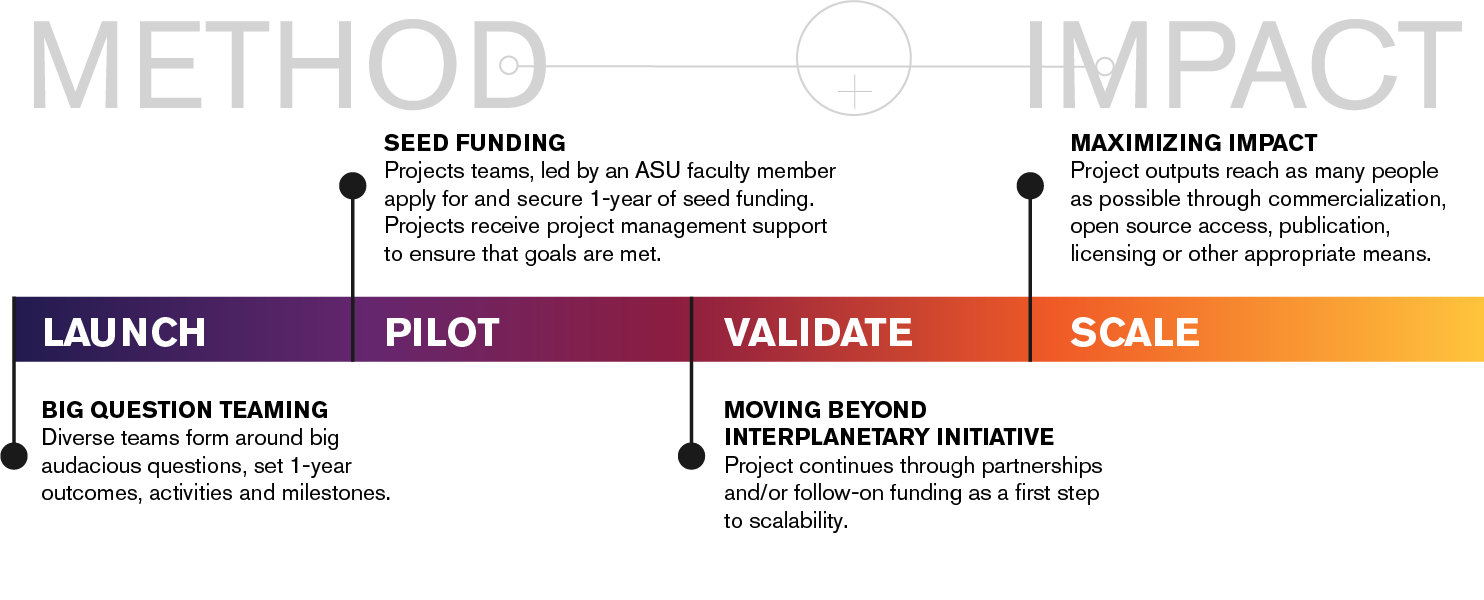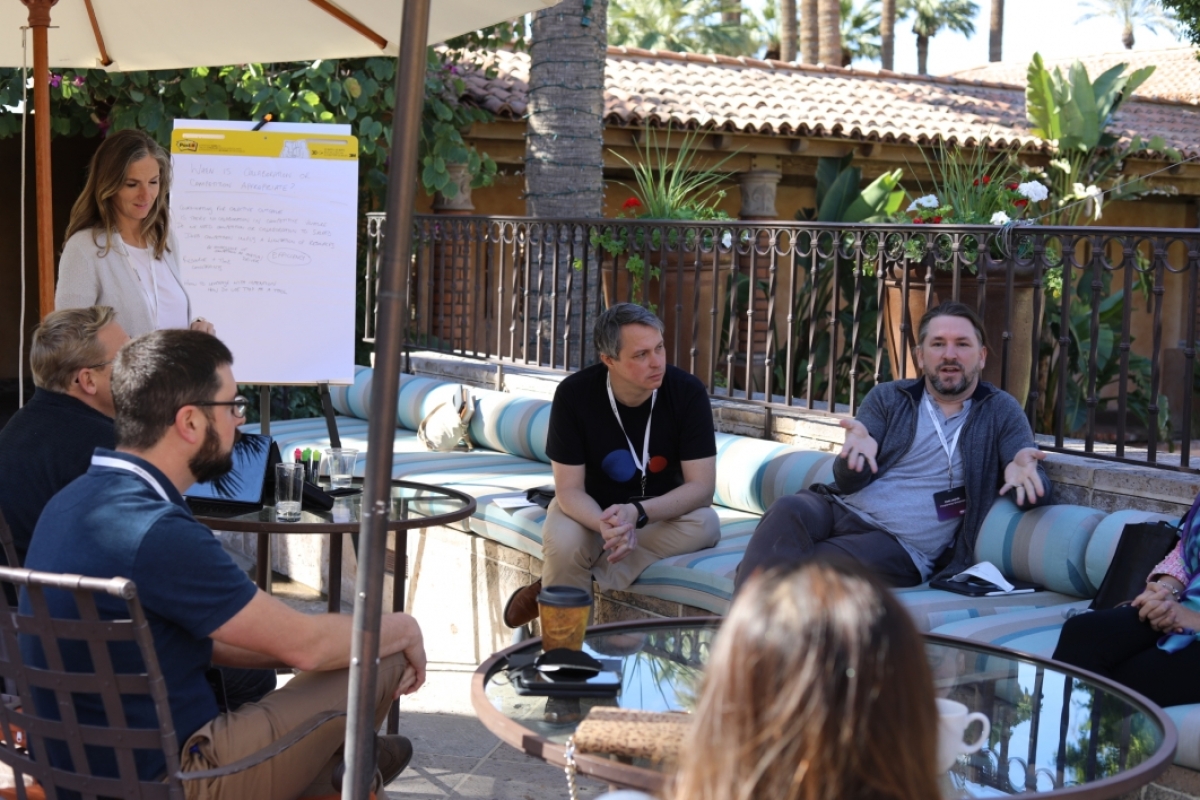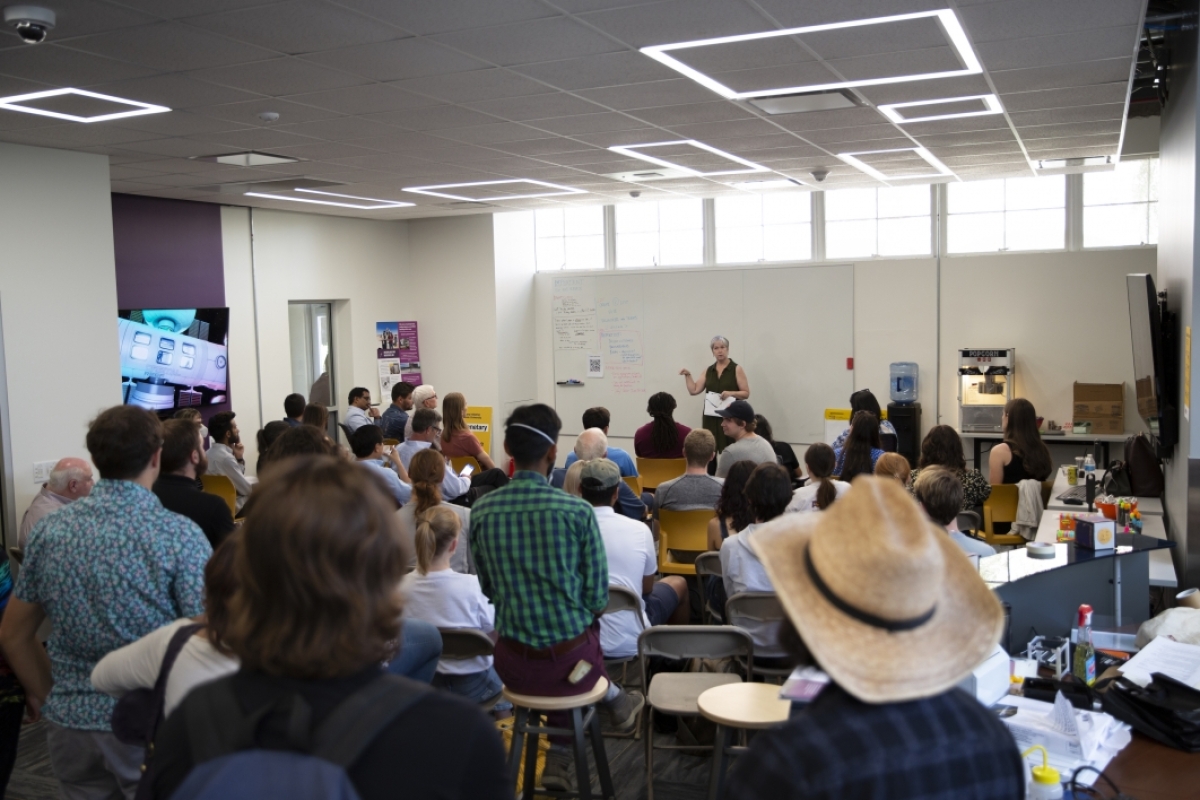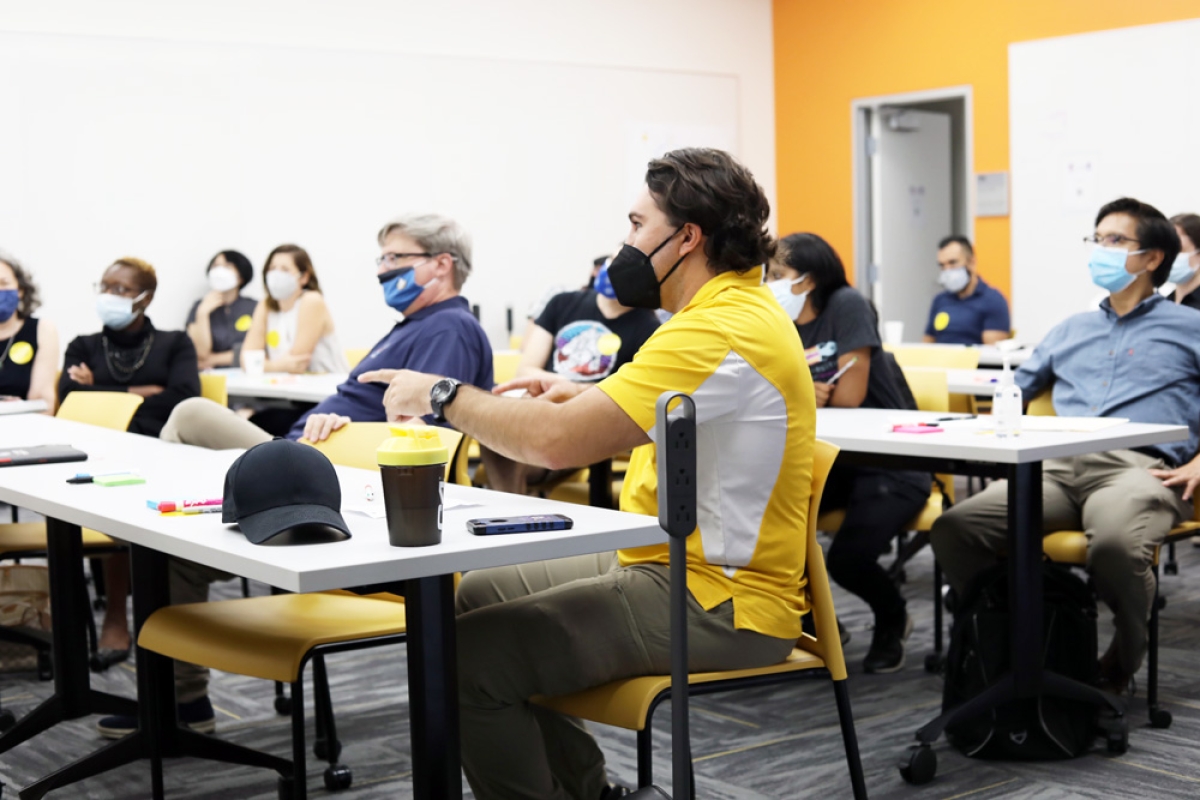Interplanetary Initiative expands pilot project portfolio, addressing range of topics
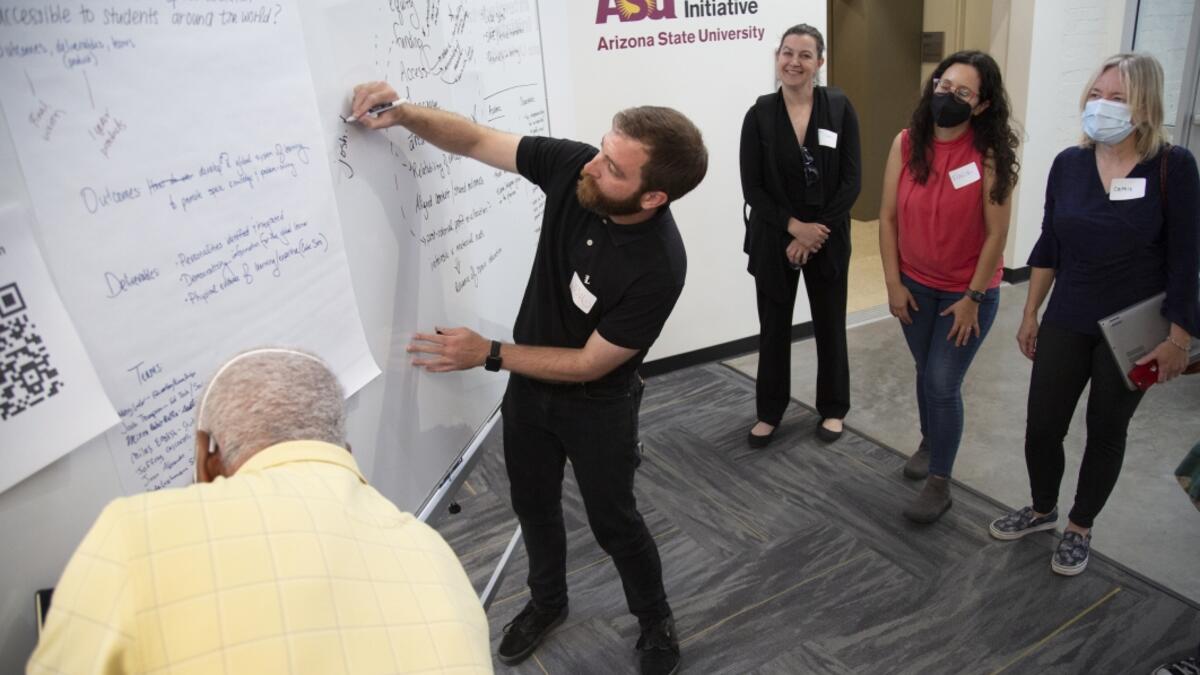
Josh Thompson, a learning technology specialist with ASU, leads a Big Questions brainstorm. Photo courtesy the Interplanetary Initiative.
Throughout the year, the Interplanetary Initiative has brought together members of the Arizona State University community, as well as industry and government experts, to develop questions and solutions surrounding accessibility to space.
Through a series of "Big Questions" teaming workshops, the participants came up with ideas for new or renewed pilot projects that the Interplanetary Initiative will seed-fund for the upcoming academic year.
The Big Questions method is designed to generate new projects that aim at the most important questions arising from our human future as a spacefaring species, while working across a broad swath of disciplines and sectors.
During the workshops, participants would brainstorm questions, then break into teams to develop a plan to work toward answers.
"To reach higher research and educational goals, we need to remove the barriers between disciplines, thus enabling transformational rather than incremental improvements in knowledge,” wrote Interplanetary Initiative Vice President Lindy Elkins-Tanton in an op-ed for Issues in Science and Technology.
“To do this, we should focus on key questions, building teams of people from many disciplines to answer them.”
The Big Questions teaming method is designed to spark new projects that aim at the most important questions arising from our human future as a spacefaring species but working across a broad swath of disciplines and sectors.
This year’s projects are:
JEDI Space will seek to answer the question of what a just, equitable, diverse and inclusive space future means and how to open space access to more of humanity through surveys, conversations and events. An important goal of this project is to inspire action to create a space community that invites people to stay, going beyond metrics to understand the root cause of the metrics.
Preventing Space War will, for the first time, convene experts and stakeholders to address three topics: understanding the consequences and pathways to conflict in space; open-source intelligence for space domain awareness; and understanding how space, space ownership and space conflict are conceptualized socially, politically and culturally.
Space Activity Heat Map seeks to create a view of space activities through the lens of their key benefits, drivers and end goals, tracked at the project level over time, investment level and geographic location. By visualizing space activities and how they are globally spread across our planet, the heat map will provide a rich perspective about the diversity of space activities globally and allow stakeholders to engage with such information to help understand and drive future space-related activities.
Earth Operations Center is a renewal of an existing pilot project. While many organizations around the world are conducting vital research into understanding and modeling climate change, there remains a need for continual and integrated modeling of earth systems and the global economy visualized over decades and centuries. In collaboration with NASA and the MIT Media Lab, the Earth Operations Center is envisioned as both a physical and virtual space that communicates insights to critical stakeholders of a wide variety of backgrounds (policymakers, educators, corporate partners, the media) through an immersive, affective experience.
Space Exploration and Sustainable Development is a renewal of an existing pilot project. The U.N. Sustainable Development Goals (SDGs) are a set of 17 global development goals and aspirations aiming for a more just, inclusive and healthy planet by 2030. With the rapid growth of the commercial space sector, this project addresses the increasing need for a framework and practical implementation strategies for the space sector to embed corporate social responsibility into their operations. As a first step, the team conducted a systematic literature review of over 12,000 papers, identifying four areas of activity related to the space sector that impact either positively or negatively the SDGs.
SpaceHACK for Sustainability is a spinoff of the current project Space Exploration and Sustainable Development. This project will use the format of a student-led hackathon to develop novel indices that track progress toward the United Nations’ Sustainable Development Goals.
Mars on the Field is a spinoff of former pilot project Five Senses in Space. The team is setting out to create a virtual reality experience that puts you on Mars on the field at Sun Devil Stadium.
Global Space Tech seeks to contribute to an increasingly important body of literature on space technologies in select developing countries. Understanding the positive and negative impacts of space technology spinoffs and transfers will serve to inform government decision-makers in these countries.
Opportunities for faculty
The projects that emerge from the process also offer an opportunity for ASU faculty to enhance their visibility and connectivity across the university and to advance their careers when they become a project lead.
“Leading the Five Senses in Space pilot project was an excellent way to gain visibility across the university," said Robert LiKamWa, lead of a former pilot project that spawned this year’s Mars on the Field project.
"It was a great excuse to reach out to faculty and students in traditionally unrelated fields to recruit participation. Presenting our work in Interplanetary Initiative venues also gave us a tremendous platform to reach audiences in the ASU community that we would otherwise not have had access to and attention from,” he said.
Leading an Interplanetary Initiative pilot project means charting new pathways into defining our space future through collaborations within and outside of ASU, with support from the initiative.
“Having light-touch project management and support in communication, logistics and feedback is so valuable when working on big imaginative projects. It threads the perfect needle between collaborative support and trusting us to be autonomous,” said Phil Stoesz, leader of last year’s Religious Space pilot project.
Anyone who would like to get involved in any of the pilot projects can reach out to interplanetary@asu.edu.
More Science and technology

Breakthrough copper alloy achieves unprecedented high-temperature performance
A team of researchers from Arizona State University, the U.S. Army Research Laboratory, Lehigh University and Louisiana State…

4 ASU researchers named senior members of the National Academy of Inventors
The National Academy of Inventors recently named four Arizona State University researchers as senior members to the prestigious…

Transforming Arizona’s highways for a smoother drive
Imagine you’re driving down a smooth stretch of road. Your tires have firm traction. There are no potholes you need to swerve to…


